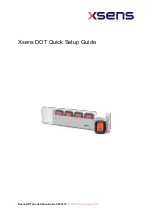
Operating Instructions— Type 1L40
cally related.
The over-modulated carrier spectrum is
usually symmetrical where as the spectrum of a multi
frequency modulated signal is asymmetrical in amplitude.
Frequency Modulated Spectrum
FM measurements generally determines the modulating
frequency, amplitude of the modulating signal or frequency
deviation, and index of modulation. A typical FM spectrum
is shown in Fig. 2-15. The exterior modulation envelope
resembles a cos- curve, which is an identifying feature of
the frequency modulated carrier.
Frequency Deviation Measurement
There is no clear relationship between spectral width and
deviation, because in theory the FM spectrum approaches
infinity. In practice, however, the spectral level falls quite
rapidly. See Fig. 2-15B. Accurate deviation measurements
can be made if the modulating frequency and the modula
tion index (where the carrier goes to zero) are known.
Modulation index ~~
Carrier deviation
Modulating frequency
Values of modulation index corresponding to zero carrier
amplitudes are listed in Table 2-1.
TABLE 2-1
Values of modulation index for carrier
null points
O rd e r o f C arrier N u ll
M o d u la tio n Index
1
2.4
2
5.52
3
8.65
4
11.79
n (n > 4)
11.79 + ir (n - 4 )
Accurate carrier null is essential for accurate measurement.
Analysis and Measurement from the
Spectrum of a Pulse M odulated Signal
An examination of the spectrum from a pulse modulated
device such as a radar transmitter, provides a variety of
information about the system. The amount of frequency
shift (long term or short term) in the display indicates the
stability of the transmitter oscillator. The absence of deep
or prominent lobe minima's adjacent to the main lobe
is an indication of the frequency modulation, provided the
resolving power of the analyzer is sufficient. See Fig. 2-18C.
Double peaks in the main lobe indicate that the oscillator
is operating in two or more modes, which could be caused
by some external load such as mismatched transmission
lines or fluctuating supply voltages. A visual indication is
provided to tune the transmitting system so that most of
the output power is within the frequency bandwidth of the
receiving system.
The following measurement may be performed from the
spectrum of a pulse modulated display.
Pulse W idth: The theoretical pulse width for a rectangular
pulse is the reciprocal of the spectral side lobe frequency
width.
The main frequency lobe or its side lobes can
therefore be used to measure the pulse width of the pulse
modulated spectrum. This is accomplished as follows:
1. Adjust dispersion control and tune the RF CENTER
FREQ control so the main lobe of the spectrum is displayed
in the center of the graticule, and the side lobes are visible
on each side.
2. Adjust the G A IN control and switch in the necessary
IF ATTEN dB switches, so the main lobe and its side lobes
are within the graticule height.
3. Adjust the scanning rate for optimum spectrum defini
tion.
4. Adjust the RESOLUTION control so the minima between
lobes are easily discernible without excessive loss of sensi
tivity. Change the mode selection of the VERTICAL DISPLAY
to accentuate these minima points. (Usually LOG position.)
5. Calculate the frequency width of either the main lobe
or a side lobe as directed under measuring frequency d if
ference. The pulse width is equal to the reciprocal of V2 the
main lobe frequency width, or the reciprocal of the side lobe
frequency width. See Fig. 2-21 A.
(B) Pulsed RP d isp la y in LOG mode
Fig. 2 -2 1 . Pulse m odulated RF d ispla y illu s tra tin g LIN and LOG
mode op eration.
2-20
Summary of Contents for 1L40
Page 30: ...Fig 3 1 Type 1L40 Block Diagram CO K ISO 2 5 0 MHz 75 MHz Circuit Description Type 1L40 ...
Page 40: ...NOTES ...
Page 54: ...NOTES ...
Page 85: ...NOTES ...
Page 103: ......
Page 117: ...I ...
Page 119: ...T Y P E I L 4 0 S F t C T R U M A N A U V t R A ...
Page 120: ...L R O G 8 R F P H A S E L O C K D I A G R A M A ...
Page 124: ... 75V T Y P L I L A Q S P f c C T R U M A N A L Y Z t R ...
Page 126: ... T y p t S P E C T R u M A N A U V 2 f e R A ...
Page 127: ...4 A P H A S t L O C K C I R C U I T ...
Page 128: ...iv r AMPUH19 1 rRon J9A 4 T Y P E L 4 0 S P E C T R U M A N A L Y Z C R A I ...
Page 130: ......
Page 134: ... IS MHZ IP lO M Hx OSCILLATOR r T Y P E IL 4 0 SPECTRUM ANALYZED ...
Page 135: ... lL I z 5 a or lJ ui Ul X i u tt O a i d id u it l h 5 12 2 a or PO S 3 J3 ...
Page 139: ...DETECTORS i 4 1066 OUTPUT AMPLIPIER ...
Page 140: ...FIG 1 FRONT REAR TYPE 1L40 SPECTRUM ANALYZER ...
Page 141: ...FIG 2 IF CHASSIS PHASE LOCK AS 6 1 ...
Page 142: ...F CHASSIS PHASE LOCK ASSEMBLIES TYPE 1L40 SPECTRUM ANALYZER ...
Page 145: ......
















































